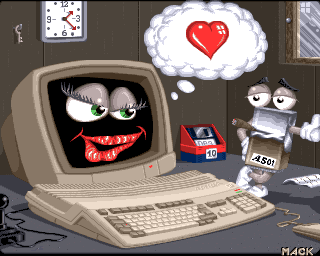Amiga Demoscene: Swapping – When we swapped disks through snail-mail worldwide!
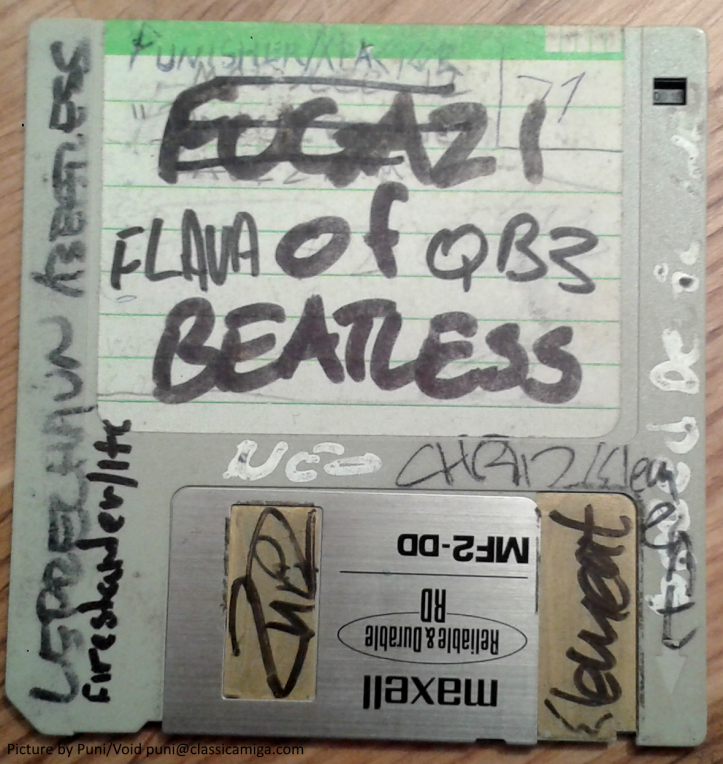
Hi folks,
This post is actually based on an old article I wrote for Classicamiga.com over 10(!) years ago. For me, personally, it is a very interesting topic, since I was a swapper for many years on the Amiga demoscene. At the most I had between 100-150 contacts and received perhaps 3-5 packages a day with stuff in the post. I had friends in Australia, Spain, Germany, Greece, Sweden, UK, Poland, Czech Republic, Serbia and more! Very cool!  " class="wp-smiley" style="height: 1em; max-height: 1em;" /> Keep in mind that we did not swap games and programs (for the most part), but mostly demos, intros, slideshows and packs.
" class="wp-smiley" style="height: 1em; max-height: 1em;" /> Keep in mind that we did not swap games and programs (for the most part), but mostly demos, intros, slideshows and packs.  " class="wp-smiley" style="height: 1em; max-height: 1em;" /> I’ve re-written the text and hope you’ll find this piece of Amiga history interesting. Thanks for reading.
" class="wp-smiley" style="height: 1em; max-height: 1em;" /> I’ve re-written the text and hope you’ll find this piece of Amiga history interesting. Thanks for reading.
Introduction
The Internet is something most of us take for granted today. Our societies have grown dependent on the constant flow and exchange of information through and it is safe to say that our communities and economy would enter a crisis situation if it suddenly was gone. It wouldn’t just be a catastrophe for businesses, but also for ordinary people, everyone would be affected! Facebook has over 1 billion users, isn’t that crazy?
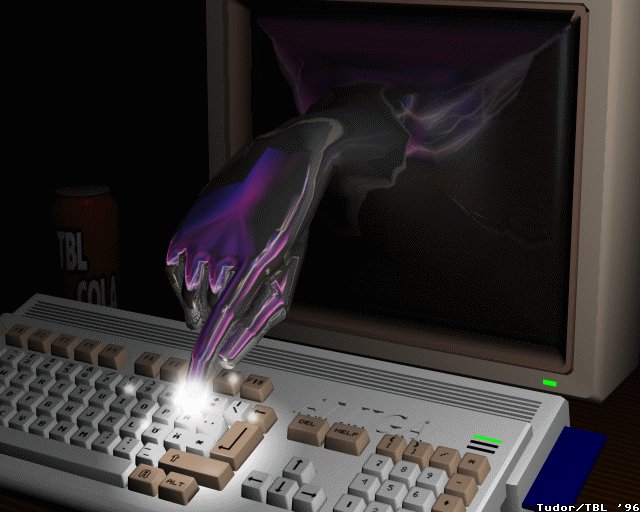
With this in mind, it is certainly strange to think about how things were like 15 to 25 years ago. The Internet was not a widespread phenomenon and most people didn’t have a clue about what it was. Things were different back then. If you had a bill to pay, you went to the bank. If you wanted to buy a game, you called up a mail-order company, read catalogues, or you just went to a nearby store. If you had an assignment at school, you couldn’t just use Google to find all the necessary information. You had to go the library, find the relevant material, and then sort everything out without help from fancy computers or search engines. It took a lot of time, but it worked, and people learned from it. Of course, those things could be done faster and easier with the help of the Internet, and that is probably exactly why we use it today.
Anyway, I feel like I’m going way off topic here. Let’s get back on track. Having no Internet to speak of, people belonging to the Cracking- or Demoscene had to trade their stuff in alternative ways. Most of you have probably read, used or heard about what is called Bulletin Board Systems (BBS), but that is not what I’m thinking about right now. What I’m thinking of is swapping, or mail-trading if you like. This was a very popular and common alternative to exchanging bits and bytes through a phone line. Snail-mail was for the most part cheap and reliable and accessible to everyone.
So, what was swapping like? What made it so interesting for those that was involved, and why isn’t it an activity performed today? The last question is probably the easiest one to answer, since we’ve already taken a look at the Internet. But when it comes to the other questions, we will investigate them to see if we can come up with some answers.
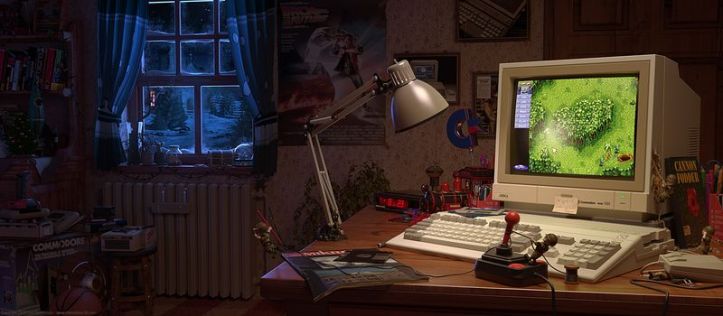
Swapping – Snail-mail exchange
The general idea behind swapping was straight-forward. Two people established contact with each other with the purpose of exchanging software through ordinary mail. It was actually as simple as that. Although such a description doesn’t sound particularly interesting, there is much more to it than the usual exchange of software. To find out what, we will have to take a glance behind the curtains.
Value for Money – Fiddling with the Postage
As you can imagine, sending for example 50 packages with disks a week could be expensive. Most people were young and they didn’t have an income matching those of adults. To get around this money barrier, certain tricks of the trade were utilized.
The first method was called stamp-faking. It was not like you produced fake stamps in your basement, but something a little more innocent. I’ll try to give a brief description of how it worked. Person A was going to send a few disks to person B. On the stamps on the envelope, person A used transparent glue on the top of the stamp. When person B received the package, he returns the glued stamps back to A. Mr. A then wipes off the glue with some liquid of his choice, and voila, the stamp can be used again. The stamp-mark would disappear with the glue, so the stamp looked more or less like new. This method was highly dangerous though, as it was reckoned a criminal offence. It still is, so don’t get any ideas now… Many people got caught, and had to cut down on their swapping activities because of it.
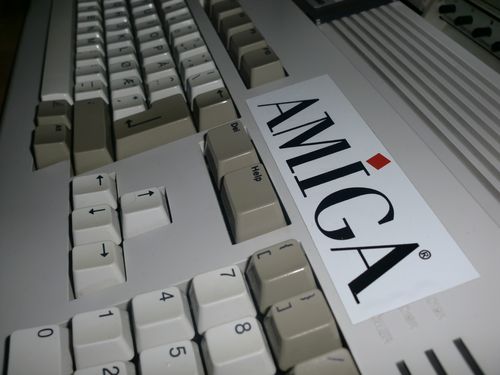
The second method was widely known as low-paying. It was a bit safer than stamp-faking. What you did was just to put on fewer stamps than was necessary to post the package. The packatge would get through the post like 99% of the time, so you could save some serious cash this way.
Friendship, Elite
To be known as a swapper on the Demoscene, you needed to have a network of contacts. Some people could for example have 15 contacts, while others could have something like 200. Some people enjoyed having a lot of contacts, as they would get more hot stuff. On the other hand, there were swappers who were satisfied with a lower amount of contacts. They preferred to call themselves friendship orientated swappers. A dividing line was established between so called elite swappers and those who focused primarily on friendship. There were also combinations involved where some guys had a lot of contacts, but despite all the work that took, also focused on the friendship part.
Tagging the Disks
As mentioned before, people used disks to exchange stuff. A funny thing to note is that most swappers tagged their handle on the disks. As the floppies were spread around from country to country, you could end up having 8 or perhaps as many as 10 signatures on them. One could notice how active certain swappers was this way, as one often got disks with their signature on. Some guys did also have special stickers with their handle and address on, which probably brought them some new contacts as well.
Here are two pictures from my collection of old disks. Will upload more later to the blog. 

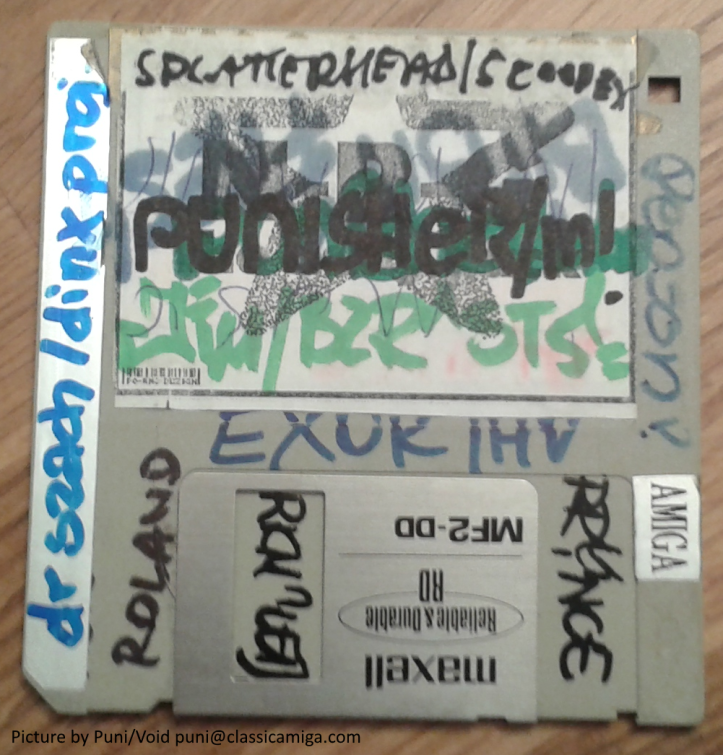
Here you see the various people the disks have passed through; Disk 1: Azzaro/MAWI, Dimer, Protas/Nah-Kolor, Tom/NNG, Puni (me!), Toxic – Disk 2: Jim/Sector 5, Dr. Szach/Dinx Project, Exor/High Voltage, Puni (me!), Renton (the worlds best swapper in the 90’s, member of Nah-Kolor and Floppy, formerly known as Blaze), Splatterhead/Scoopex,
Advertising
Another interesting question is how swappers managed to get in touch with new contacts. Where did they look? Packs and diskmags was the two main areas that the swappers could utilize for this purpose. Most packs and diskmags had what was called an advert section. Here you could find as many as over hundred adverts from people around the globe.
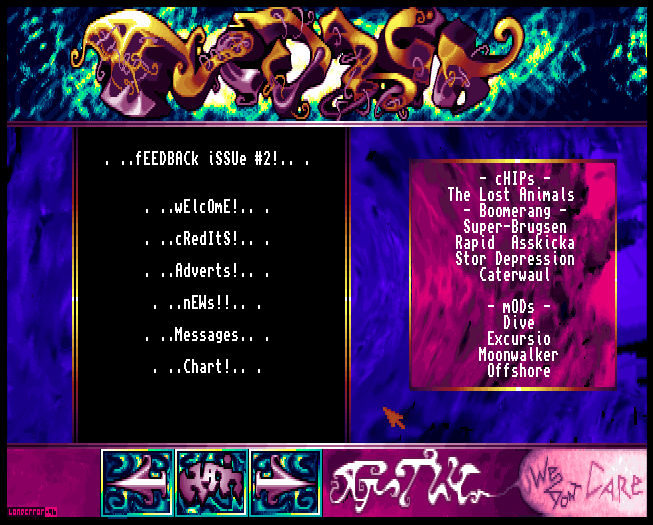
The adverts were often stylish with fancy ascii-logos, so that it would gain the attention of the reader. Adverts also appeared as standalone textfiles, often bundled with a demo.
Against the Stream – Boycotting the Eurochart!
Swapping was the main way of exchanging stuff for many, many years. When things started to go downhill during the last years of the 90’s, swappers didn’t go down without a fight. Despite the Internet and BBS’s, they kept on doing what they loved. It might seem strange today, but for those that were involved, swapping was a tradition like no other.
There is especially one moment in the history of the Amiga Scene that deserves to be mentioned. Let us travel back a few years in time.
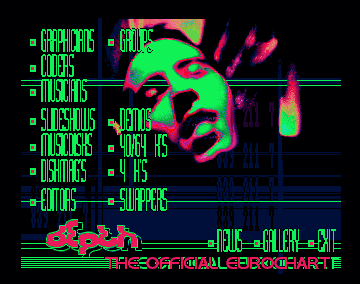
In 1997 The Official Eurochart decided to drop what they called The Best Swapper chart. The Eurochart depended heavily on swappers collecting vote sheets for the charts though. Without the votes they collected, a real chart wouldn’t have been possible to create. Still, they chose to close the swapper chart.
What happened is quite unique. A lot of swappers, several of them official spreaders and collectors of the production, decided to launch a boycott. The support they got was extensive and things looked dark for The Eurochart. One swapper from Sweden, I think it was Hawk of Giants, actually burned a whole lot of vote sheets until there was nothing but ashes and dust left of the pile. He showed a kind of true dedication to the old-school tradition he was part of. Others just stopped collecting and sending votes to the people behind the chart. They knew that without such support, the production couldn’t be made.
After some time, the boycott totally crippled The Eurochart, and the authors had to go back on their decision. The swapper chart was re-introduced and the Sceners (swappers and others) lived happily ever after. The boycott had worked and the swappers had showed that they still was a force to be reckoned with.

In the latest issues of The Eurochart, there is actually not a chart for swappers included. The reason for that is that there is not any swappers left, or if it is, it is only handful left. If any swappers out there read this and believe I’m wrong, please give me a sign, and I will correct what I have written. Nothing would please me more than to see that there are still people today, in the world of electronic communication, doing stuff the good old fashioned way.
This leads us over to the current state of swapping.
The Situation Today
As we already know, the Internet is the main of area of file exchange these days. Because of the Internet becoming so widespread, swapping has more or less died out. It has become a thing of the past on the Demoscene and therefore a part of its history.
Last Words
I could write much, much more about swapping – intrigues between groups and sceners, funny stories, busts, you name it, but those are topics for future posts I think. 

 Source: Old School Game Blog
Source: Old School Game Blog
Right now I’m happy the Demoscene is alive and well in 2017 with my old group Void still being active. I’m not a swapper anymore, but I still maintain some of the friendships I got back in the 90’s, so many years ago.
I’d like to use the opportunity to send out greetings to all of my old contacts back in the days. 
Thanks for reading this looooong post and hope you enjoyed it. 
